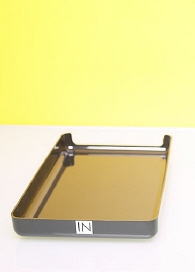 I've been using David Allen's Getting Things Done (GTD) for a few years now. I've never given up, but never felt I was getting anywhere near the "black belt" technique that David talks about, and have only gotten glimpses of the "mind like water" feeling GTD is designed to give.
I've been using David Allen's Getting Things Done (GTD) for a few years now. I've never given up, but never felt I was getting anywhere near the "black belt" technique that David talks about, and have only gotten glimpses of the "mind like water" feeling GTD is designed to give.
One of the issues I've had is one David discusses in the book: You won't be truly successful until you create a "trusted system" where your mind trusts that, once you put something into your system, the item won't disappear into a black hole. For me the challenge has always been the infamous "context lists" that I first encountered with the GTD system. The idea is that you create lists that map specific contexts in your life: @calls for when you're ready to make phone calls, @computer-web for online activities, etc.
From day one, I've been good at putting things into these context-sensitive lists, but I have not been good at using those lists when I'm in a particular context (for example, I often sit at the airport where I could make a few calls but I seldom remember to check my @calls list). As a result, I found I'd fallen into the trap of not being willing to take things out of my inbox because my mind didn't trust me to work off the lists and get the items done at the right time. So, I've gone from an "often empty" inbox to a "sometimes empty" inbox to a "seldom empty" inbox over the course of time.
But something's changed. Over the last month or so, I've discovered a couple of things that have made a huge difference for me - and I've tweaked my GTD techniques to incorporate a couple of new things. The result? I've gotten my inbox to empty every day for the past two weeks (a first for such consistency) and I am actively managing my lists.
I'm in the process of writing up how I did it and what tools and techniques I am using, and will be sharing that with you over the course of the next week. Stay tuned - like any sustainable process, it involves people (or in this case, person), process, and tools.
Related items:
